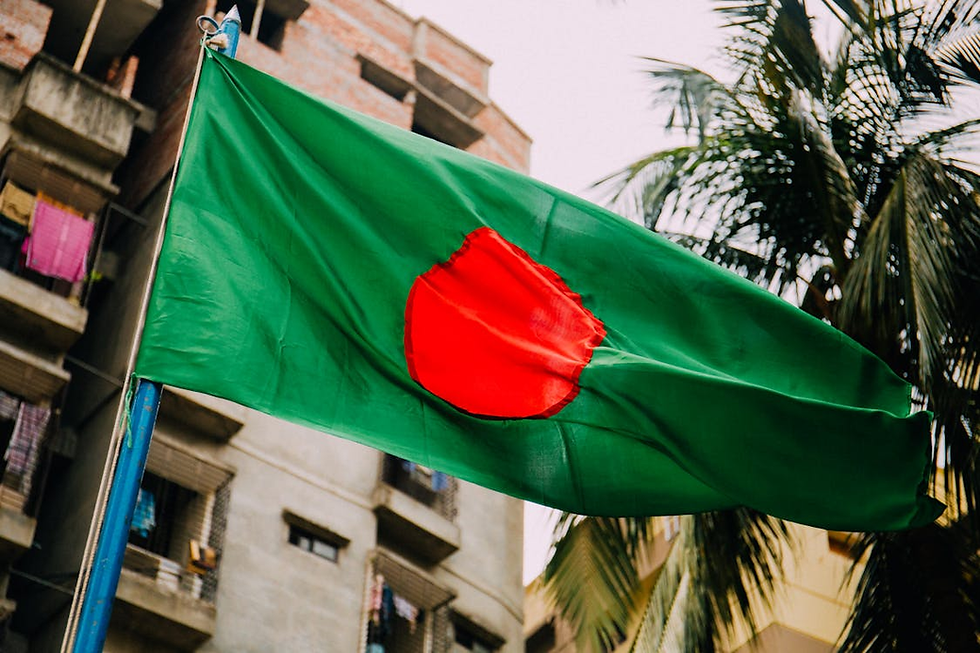Potential Dress Code Causes Controversy in Cambodia
- Maeve Korengold

- Aug 8, 2020
- 4 min read
Updated: Dec 22, 2024
Maeve Korengold writes about proposed legislation that would outlaw "inappropriate" clothing in Cambodia. Some activists worry that the law would target women in particular, and potentially worsen a culture of "victim blaming". Those in favour of the new regulations argue that it enforces the Chbab Srey: a "code of conduct" for women that aims to uphold traditional values.
The Cambodian government recently proposed a law that would enforce a public dress code. If this legislation is enacted, women who wear clothing regarded as “too short or too see-through” and men who go shirtless in public would be fined by the police. If this legislation is approved by Cambodia’s government ministries and National Assembly, it will be introduced next year.
This proposal has been condemned for being “vague and encouraging a culture of victim blaming”, in regards to assault victims. Many women have taken to social media to speak out against this potential law by posting pictures of themselves in swimsuits and revealing outfits, while a petition against this proposal has, to date, received over sixteen -thousand signatures. Tan Molika, a recent high-school graduate says that she had “no plans with the petition other than to raise awareness,” but it "turns out that everyone is so against [ the law] to the point [she’s] got a few requests for [her] to submit the petition to the government.”
Chak Sopheap, the executive director of the Cambodian Center for Human Rights, said: "In recent months, we've seen the policing of women's bodies and clothing from the highest levels of government, belittling women's rights to bodily autonomy and self-expression, and placing blame on women for violence committed against them." In addition to this, Sopheap is concerned that this law “will be disproportionately used against women exercising their fundamental freedoms.”
Nevertheless, many Cambodian lawmakers, including Ouk Kimlekh, an interior ministry secretary of state leading the drafting process of this legislation, believe that laws like this are necessary to keep Cambodia’s conservative society intact. “It's good to wear something no shorter than the middle of the thighs,” Kimlekh says. “It's not entirely a matter of public order, it's a matter of tradition and custom.”

An example of this “tradition” is the Chbab Srey, which is described as “a code of conduct explaining what society expects of women.” The full text of the Chbab Srey was taught in Cambodian schools until the Ministry for Women’s Affairs called for it to be removed from the curriculum in 2007, however, a shorter version continues to be taught to students in grades 7-9. Some examples of these teachings include “Happiness in the family comes from a woman” and “a woman’s poor character results in others looking down upon her husband.” In 2019, the United Nations said that the Chbab Srey should be “fully eliminated” from schools. Furthermore, they described the code as the "root cause of the disadvantaged position of women." There’s also a code of conduct for Cambodian men, which is called the Chbab Proh. This code has “much less stringent rules.”
Another way in which these “customs” are upheld is Cambodian Prime Minister Hun Sen’s calling for “authorities to track down women [who were] using provocative sales pitches”, because they “sullied Cambodian culture and encouraged sexual abuse.” Days after this declaration, a woman was sentenced to six months in prison on pornography and indecent exposure charges after a Facebook live stream in which she “ignored official warnings to wear less revealing outfits while selling clothing and cosmetics.”
Cambodian women’s rights groups have criticized the recent changes in women’s freedom. Many feel such legislation “could put women at further risk of sexual harassment and violence by fostering a culture of victim-blaming,” according to Ming Yu Hah, deputy director of Amnesty International in the Asia-Pacific region. She continues, “Reprimanding women for their clothing choices serves to reinforce the notion that women are to blame for sexual violence they suffer, and thereby further entrenches the culture of impunity which exists in relation to gender-based violence." Many activists feel that the idea that women should dress in a certain way as to not distract others or become victims of sexual assault is misogynistic and unfair.
The Cambodian Center for Human Rights documented four-hundred and sixty-seven rape cases in 2011, and three-hundred and twenty rape cases in 2012. These numbers are likely higher because rape is underreported due to the fact that “many victims never file complaints with the police or are compensated financially by the perpetrator to avoid the case going to court.” In 2013, a nineteen-year-old, disabled woman was gang-raped by two men in the Kien Svay district. According to the Cambodia Daily, there was “no public outcry for the woman, despite the lack of police action and the cruelty of the crime.”
“It was already 9 p.m. when she was raped. She shouldn’t have been out so late,” said district Police Chief Pam Sam Eth.
The proposal of a law policing what people, especially women, are allowed to wear in public has sparked positive reactions from “people from all parts of society.” Ultimately, according to the ASEAN Post, this possible legislation has “taken the discussion of gender equality in the country to a new level.”

_edited.png)



Comments